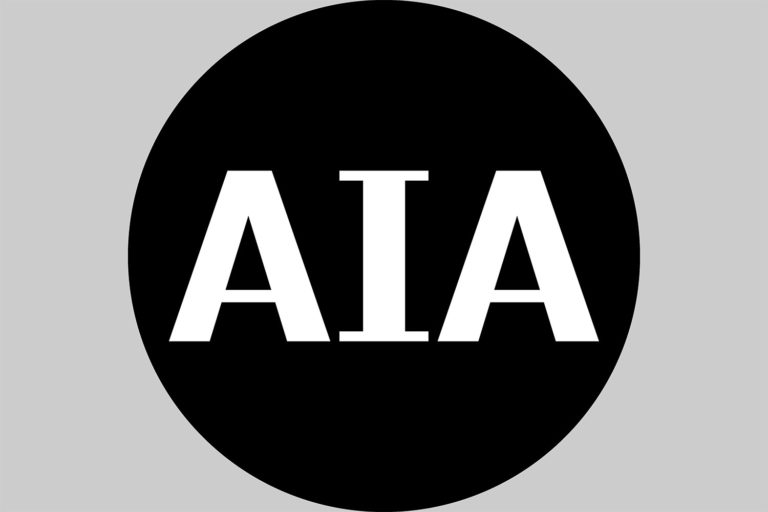by: Patricia Harris
Starting a new architectural practice is a big decision. One of the next big decisions for the architectural entrepreneur, and one that has long-lasting implications, is deciding what form of business entity will be appropriate for your current as well as your future practice. While a licensed architect can certainly just go out there and practice as a sole proprietor, formation of an appropriate business entity shields the architect from personal liability in most business contexts.[1]Unlike many other business endeavors, architects and their practices are highly regulated because of their charge to safeguard life, health, property, and the public welfare. In most states, including New York, architecture may be practiced only through very specific entity types, and those entities must be registered not only with the state’s business division but must also pass muster with the appropriate state regulatory authority.
New York allows architects to practice through four[2] primary entity types: professional service corporations, design professional service corporations, professional service limited liability companies, and limited liability partnerships. Set forth below is a description of each entity type, its benefits and limitations:
- Professional Service Corporation (PSC). A PSC is organized by filing a Certificate of Incorporation with the New York Department of State. Each shareholder, director, and officer in the PSC must be licensed in New York State, and the PSC can provide those professional services for which each of the individuals is licensed. The PSC is typically governed by a shareholders’ agreement, or if there is none in place, by the default procedures set forth in New York’s Business Corporation Law.
This entity is subject to tax at the corporate level, meaning tax is imposed on the income of the corporation and the after-tax income can then be distributed to the owners of the business (and taxes are levied again in connection with each owner’s personal income). This double-taxation issue can be cured if the shareholders elect Subchapter S status. Be aware that there are certain limitations that come along with the Subchapter S election; for example, the entity may have no more than 100 shareholders, all shareholders must be individuals, non-resident aliens may not be shareholders, and the entity may issue only one type of stock. However, the start-up costs associated with this type of entity are minimal compared to those that require publication (described below).
- Design Professional Service Corporation (DPSC). The DPSC was authorized in New York effective January 1, 2012. This is the only entity option (other than grandfathered corporations) that enables non-licensed persons or entities to have an ownership interest in a design professional firm. Like the PSC, a DPSC is organized by filing a Certificate of Incorporation with the Department of State. The DPSC may render multiple professional services providing there is at least one shareholder licensed in each service to be provided. More than 75% of the outstanding shares of the DPSC, as well as more than 75% of the directors and officers of the DPSC including the president, the chairperson of the board, and the chief executive officer(s) must be licensed in New York State. Other shareholders may include employee stock option plans and non-licensed employees, providing their collective ownership is less than 25% of the corporation’s outstanding shares. The DPSC may also governed by a shareholders’ agreement. Like the PSC, the DPSC is subject to double taxation, at the entity and individual owner levels, unless a Subchapter S election is made. Be aware that each state has its own rules regarding permissible ownership of professional practices and, due to the “mixed” ownership inherent in a DPSC, this entity as constituted may be more difficult than others to qualify to practice in other jurisdictions. Nevertheless, the DPSC may be the best type of entity for future growth compared to the other entity types because the less restrictive ownership rules allow for the possibility of rewarding a wider group of employees with ownership interests in the firm.
- Professional Service Limited Liability Company (PSLLC). The PSLLC is established by filing Articles of Organization with the New York Department of State and typically managed pursuant to an Operating Agreement among its members (also true of single-member PSLLCs). The PSLLC offers a very flexible management structure compared to those entities where certain management actions are governed by law, e.g., in the corporate form, directors may take actions only by meeting or by unanimous written consent. The PSLLC is considered a “pass-through” entity, meaning taxes are not leveled at the entity itself but are passed through to the PSLLC members in accordance with their ownership interests.
Members/managers of the PSLLC can be individuals, or domestic or foreign professional entities that meet certain qualifications. Unlike in a partnership, a single-member PSLLC is allowed. All individual members/managers of the PSLLC must be licensed in New York State but the members/managers can be licensed in different design professions[3], providing at least one member is licensed to provide each service the PSLLC will be offering. All non-individual (entity) members must show that they are authorized to practice architecture either in New York or their home jurisdiction, and all must be authorized to do business in New York. The PSLLC is a popular option when multiple firms are joining forces, or a firm based outside of New York is pursuing jointly with a New York-based architect a project that requires a New York entity.
The PSLLC is governed by an Operating Agreement among the members and managers; New York law requires that every New York PSLLC have an Operating Agreement. While “form” Operating Agreements will fulfill this requirement, preparation of a customized Operating Agreement will force the members at the outset of the venture to consider issues such as management of the business; acquisition, transfer, and termination of ownership interests; death and disability of owners; distribution of profits and losses; business valuation; dispute resolution and other concerns that can become expensive – monetarily, operationally, and emotionally – if they must be resolved after the business is in operation. Start-up costs for a PSLLC can be higher than other entities because the PSLLC is required to publish a notice of formation in certain directed newspapers for six weeks (not required of any other entities except the limited liability partnership) [4].
- Limited Liability Partnership (LLP). The LLP is established by filing a Certificate of Registration with the New York Department of State. New York law requires that a partnership have at least two partners and that each partner be a design professional licensed in New York. For purposes of taxation, the LLP is a flow-through entity and taxes will be imposed on the individual partners in connection with their partnership interests. An LLP is typically governed by a Partnership Agreement; there is no statutory requirement to have a partnership agreement but, as with the PSLLC, it is generally a good idea so all partners can agree on partnership management, admission and departure of partners, contribution and distribution rules, etc. before the business begins. The LLP is required to publish a notice of formation as directed and, accordingly, it can be a relatively expensive start-up option.
Often, your goals for the new firm, the services and owners contemplated, and the costs of formation will dictate the appropriate entity type. However, it is best to receive guidance from an attorney or accountant on the pros and cons of each entity type in light of your specific facts and circumstances. Moreover, money spent on the entity’s “playbook,” be it an operating agreement, a partnership agreement, or a shareholders’ agreement is money well-spent. Choosing the right entity for you is the first step to building success.
Patricia A. Harris, Esq., is Founder and CEO, LicenseSure LLC, and Special Counsel, Zetlin & De Chiara LLP.
[1] As professionals, architects cannot be shielded from claims arising out of their own negligence or misconduct, although some of that risk may be borne by an insurer. In New York, certain corporate shareholders may have personal liability for unpaid wages.
[2] Architects may practice as well through business corporations known as “grandfathered corporations” organized before April 12, 1929, and operating continually since then; grandfathered corporations are beyond the scope of this article.
[3] Architecture, engineering, land surveying, and landscape architecture.
[4] Publication costs can run up to $2,000 for entities based in New York City.







